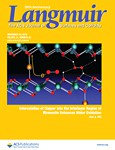Prashant S. Chikramane, Dhrubajyoti Kalita, Akkihebbal K. Suresh, Shantaram G. Kane and Jayesh R. Bellare
Why Extreme Dilutions Reach Non-zero Asymptotes: A Nanoparticulate Hypothesis Based on Froth Flotation
Langmuir, 2012, 28 (45), 15864-15875

Extreme dilutions, especially homeopathic remedies of 30c, 200c, and higher potencies, are prepared by a process of serial dilution of 1:100 per step. As a result, dilution factors of 1060, 10400, or even greater are achieved. Therefore, both the presence of any active ingredient and the therapeutic efficacy of these medicines have been contentious because the existence of even traces of the starting raw materials in them is inconceivable. However, physicochemical studies of these solutions have unequivocally established the presence of the starting raw materials in nanoparticulate form even in these extreme (super-Avogadro, >10 23) dilutions. In this article, we propose and validate a hypothesis to explain how nanoparticles are retained even at such enormous dilution levels. We show that once the bulk concentration is below a threshold level of a few nanograms/milliliter (ng/mL), at the end of each dilution step, all of the nanoparticles levitate to the surface and are accommodated as a monolayer at the top. This dominant population at the air–liquid interface is preserved and carried to the subsequent step, thereby forming an asymptotic concentration. Thus, all dilutions are only apparent and not real in terms of the concentrations of the starting raw materials.





